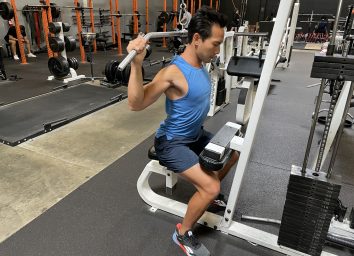Over 60? Here Are the Best Abs Exercises You Can Possibly Do, Says Trainer
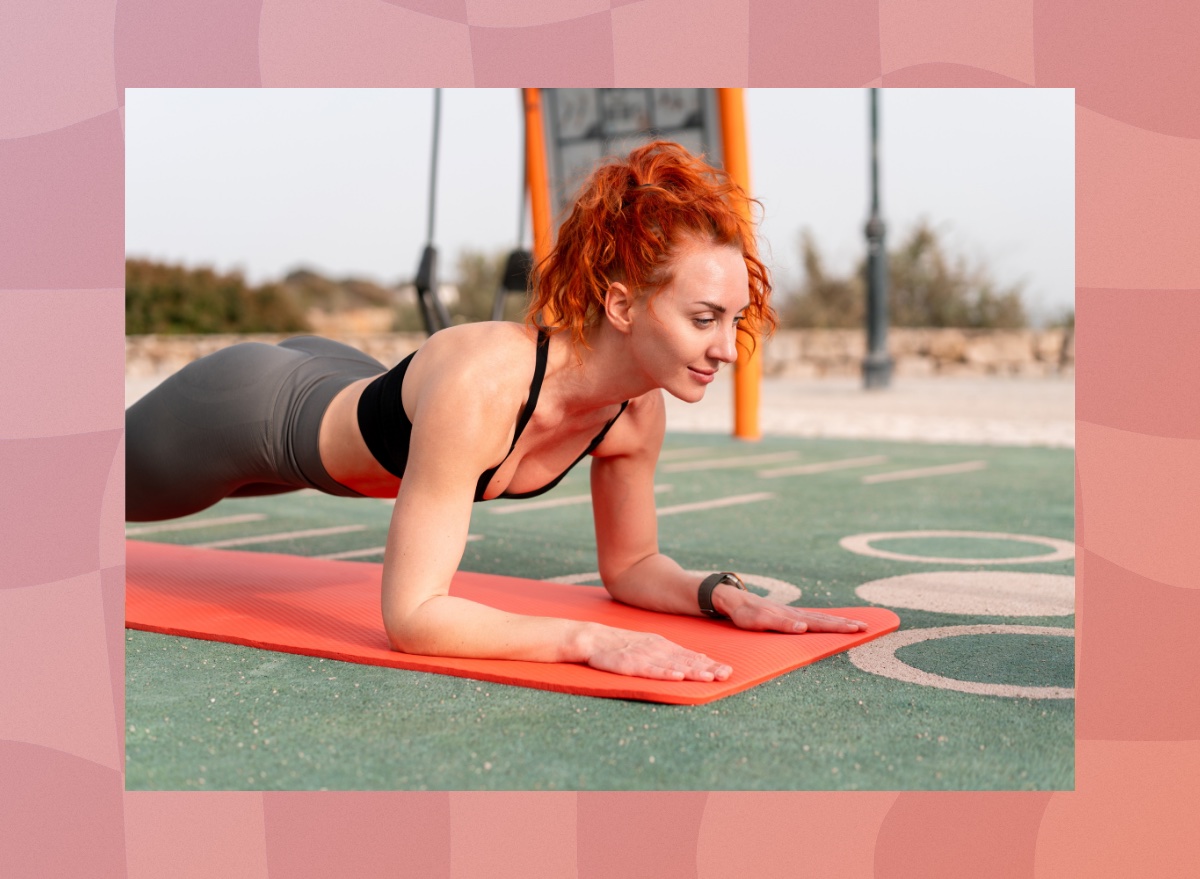
If your heart and lungs are the king and queen of essential organs, then your core is the equivalent of muscle groups. Your core muscles—which include your abs and obliques—keep the spine rigid and transfer force between parts of your body to enable a wide range of motion. These muscles are essential for ensuring good posture, stable balance, and everyday movements. In other words, every time you walk, stand up to stretch, or adjust your seat in your chair, you can thank your core muscles for making that possible.
Your core (especially your abs) become even more important as you age. Humans naturally lose some muscle and bone mass as they age, which affects strength and mobility. Without continued core work, you might struggle to do everyday tasks like walking, and become more at risk for issues like lower back pain. You'll also suffer from bad posture and a lack of physical stability. That's why working your abs as you age is so important—it'll help you stave off and even prevent a lot of the more frustrating aspects of aging.
That said, the natural changes that occur in an aging body mean that the abs exercises you did in your 20s aren't necessarily the best when you're in your 60s. Traditional crunches and sit-ups, for example, can put too much pressure on the spine for someone older. That's why I put together these four abs exercises for people over 60 to help promote a healthy, strong core. Incorporate them in your own routine and watch your abs and overall strength improve in no time. And if you're looking for other age-appropriate workouts, don't miss: Over 60? Here Are Some of the Best Cardio Exercises for You, Says Trainer.
Side plank
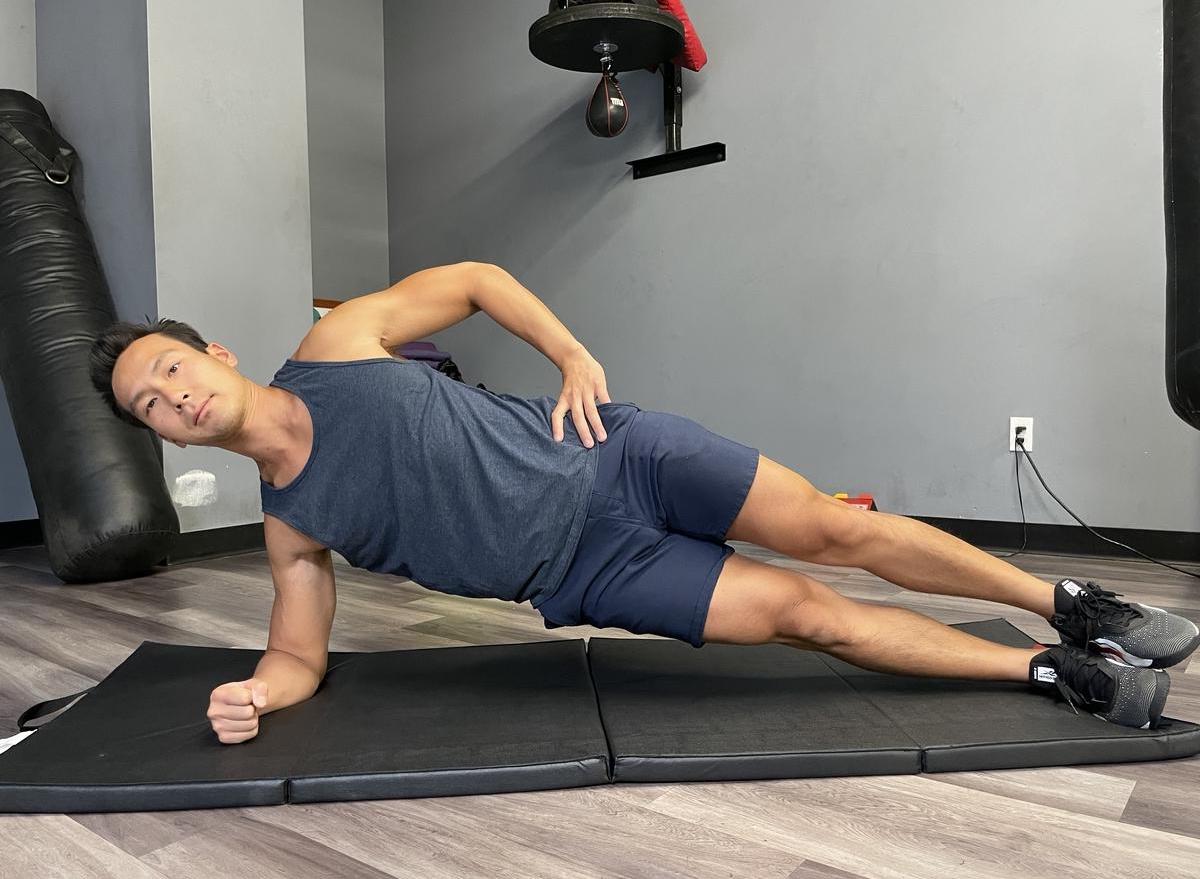
Start by lying on the right side of your body, with your legs extended out and your feet stacked on top of each other. Put your right elbow underneath your wrist, and press your weight down into your arm to hold yourself up. Your shoulder be in line with your elbow and wrist, and your forearm should be lying perpendicular to your body. Engage your core and pull your body up off of the mat so that your body forms a diagonal straight line. Keep your feet stacked on each other, and put your left hand on your hip for stability. Aim to hold for 30 seconds, then release. Switch sides, and hold your left side plank for 30 seconds. And for more intel on planks—and how they can help your walking workouts—check out The Secret Fitness Trick for Walking Better Starting Now, Say Trainers.
Low-to-high band chop
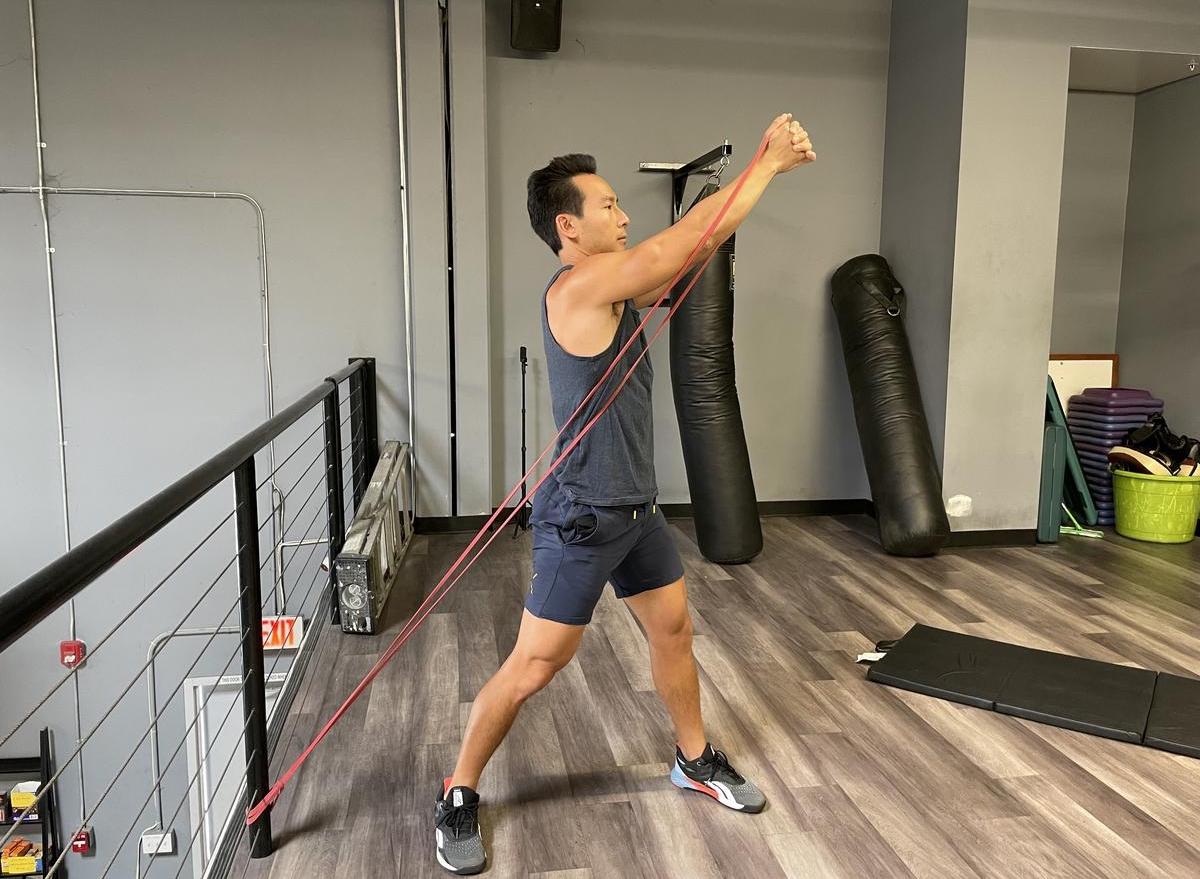
Wrapping a resistance band around a sturdy beam or pole on the ground. Grab the end of the band and take a step or two away from the pole. With your feet shoulder-width apart and hips square, turn your hips and shoulders towards the band. With your core tight, rotate diagonally up towards the ceiling while keeping your arms straight. Flex your obliques at the top, then return to starting position before performing another rep. You should do 10 reps on each side; finish all reps on one side before switching to the other.
Stability ball "stir the pot"
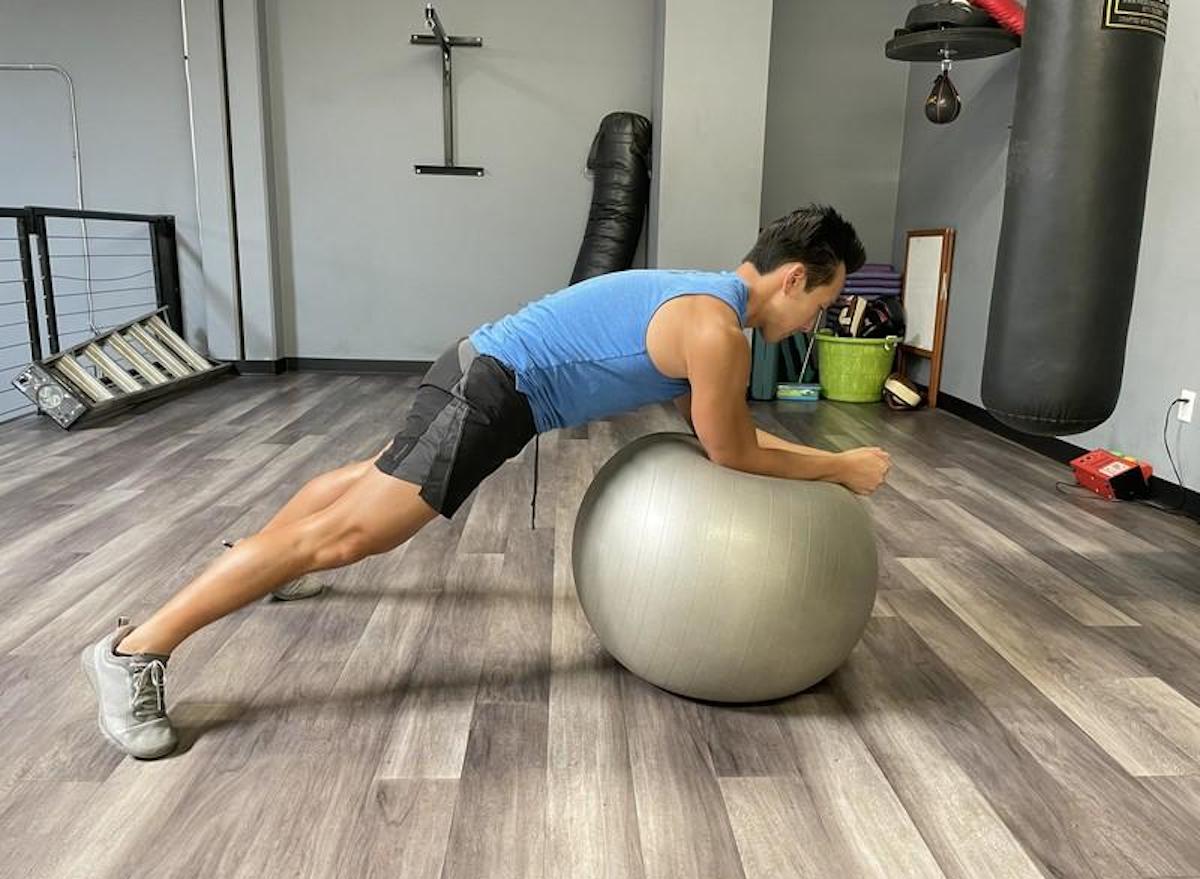
Begin by placing your forearms on a stability ball and extending your feet out with a wide base in a plank position. Keeping your core tight and your glutes squeezed, begin swirling the ball in a counterclockwise motion, then clockwise, and finally forward and back. As you're moving the ball with your forearms, be sure that your torso stays completely straight while maintaining tension in your abs. Aim for eight to 10 reps for each direction. If you want more stability ball exercises, be sure to check out Quick and Simple Exercises for a Slimmer Waist and Tighter Abs.
Plank to pushup
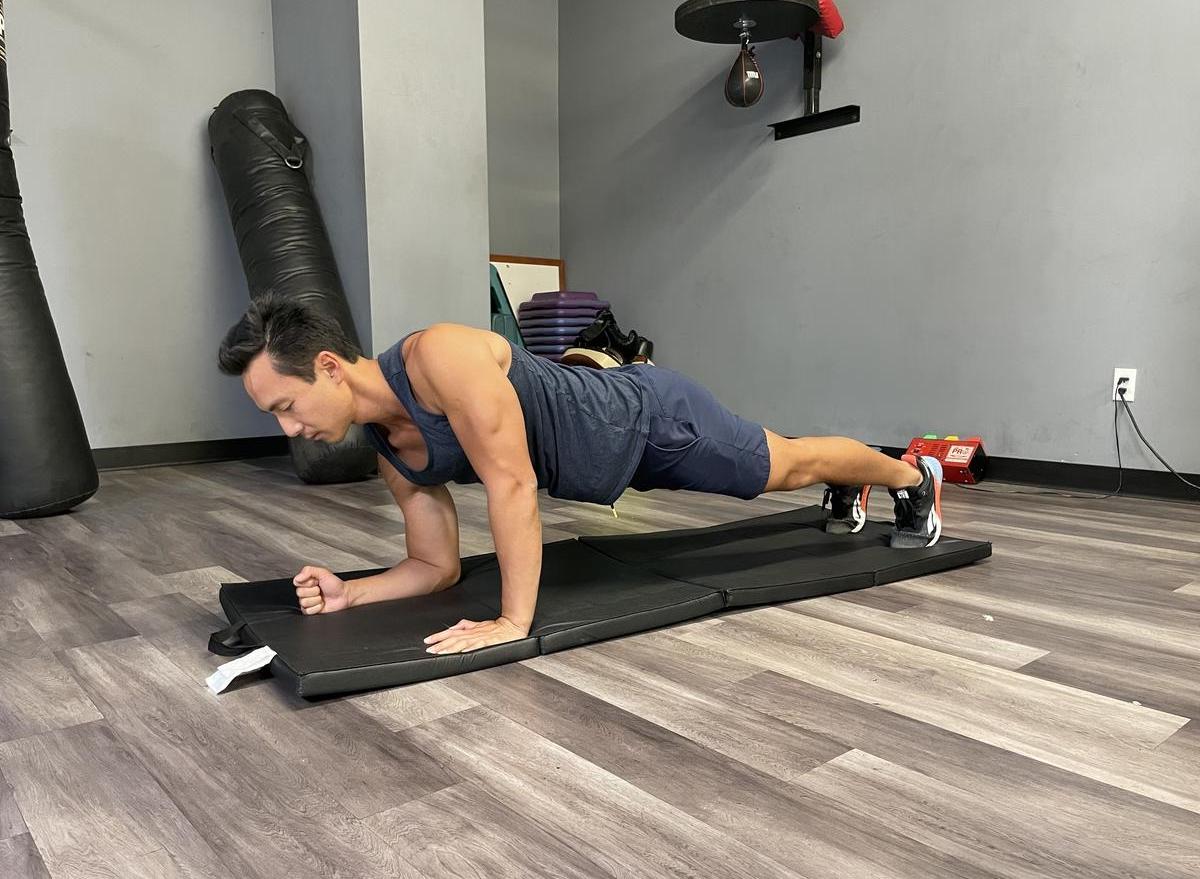
Get into a forearm plank position with your back and core tight and your glutes squeezed. Start the exercise by pushing yourself up with one hand, and then finishing with the other. Return to the plank position, and then start the movement with the other arm. Aim to complete five to eight reps on each arm. And don't miss: Over 60? Here's a Side Effect of Exercising Just 20 Minutes Per Week.
